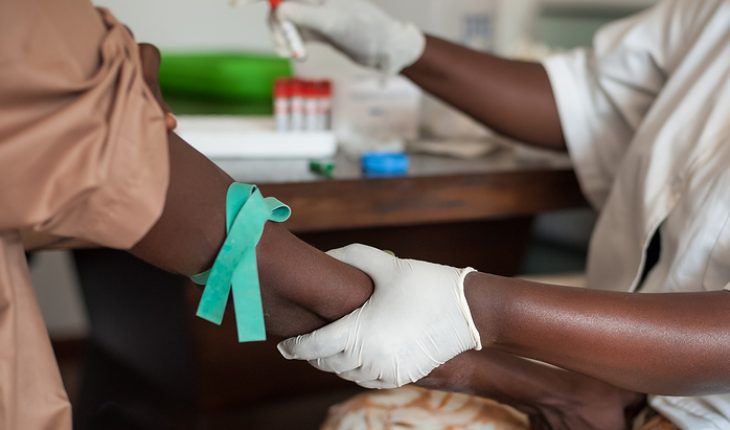Is hepatitis B infection a problem that will gradually fizzle out over time? On initial reflection, it is easy to think it might be. We have a cheap, safe and effective vaccine, and a choice of antiviral drugs that can successfully suppress the virus. We can also intervene reliably to prevent transmission from mothers to their babies by screening pregnant women, providing antiviral therapy for those found to be infected, and giving the baby preventive treatment at birth. Finally, sterile practice is widely accepted for surgery and vaccinations, screening of tissue and blood products is widely implemented, and clean needles have increasingly become available for injecting drug users.
However, the converse arguments are – unfortunately – compelling. With the global burden of chronic hepatitis B cases estimated at 350-million (ten-fold more than HIV infections), gaps in vaccination delivery, absent or limited programs for antenatal screening in many resource-poor settings, and the emergence of viral strains that are resistant to drugs and to vaccines, complacency is dangerous.
The other interesting part of the hepatitis B story is its interaction with HIV. This is of particular consequence for populations in sub-Saharan Africa where the HIV pandemic has galloped through populations in which high rates of hepatitis B infection were already established. In these areas clinicians, laboratories, and public health providers have been overwhelmed by the urgent demands of the HIV crisis; who would advocate the idea that one might divert already over-stretched resources to identify hepatitis B, which has widely been regarded as a ‘silent’ co-infection?
I was in Malawi in 2004 when antiretroviral therapy (ART) arrived for the first time. I witnessed at first-hand the overwhelming crisis of AIDS; for most hospital in-patients, ART had arrived too late. Hepatitis B infection was indeed irrelevant to these patients. However, in the decade since, southern Africa has risen to the many challenges of HIV treatment and prevention. In many cases, ART has transformed HIV from a devastating fatal infection to a stable chronic disease. The emerging challenge is managing these patients who no longer succumb to the infections and malignancies characteristic of AIDS, but in whom other pathology now has time to evolve. Hepatitis B might be close to the top of this problem list; co-infected HIV-infected patients are particularly vulnerable to disease and death from chronic liver disease, including aggressive liver cancers.
Overall, data quality for this region is poor. Hepatitis B should usually be effectively suppressed by antiviral drugs that are included in standard HIV treatment regimens. On these grounds – although WHO guidelines recommend screening for hepatitis B in all high-risk populations – inclination, advocacy and resources for testing have been limited. However, on recent visits to South Africa, I have been struck by shifts in this landscape. Clinicians, microbiologists and laboratory staff are developing insights into the impact of hepatitis B on their populations, and there are visible emerging efforts to tackle it, ranging from recognition of late complications, to new screening programs underpinned by impressive efforts of both clinical and research teams.
So how can we improve existing strategies to tackle HBV? There is much still to be learnt from close observation of natural infection; 80-90 per cent of adults with newly acquired hepatitis B infection will clear the virus spontaneously, and among those who develop persistent infection, a further 1-2 per cent per year may subsequently clear. This tells us that robust natural immune responses are entirely capable of clearing the virus. Identifying and characterising the most successful components of the immune response could be a crucial foundation for the design of novel therapies – the most attractive idea being a therapeutic vaccine that would boost optimum immune responses in patients with established chronic infection.
My own small place in this complicated picture is a new research project, funded by the Wellcome Trust, aiming to improve our understanding of these beneficial immune responses. Collaborating with our dedicated team of paediatric colleagues in Kimberley, and with links to research groups in Durban and Gaborone, our starting point has been a concerted effort to shed more light on the current patterns and characteristics of hepatitis B infection in children and adults. Expanding the network to involve new collaborators in Tygerberg and Bloemfontein, we are now setting out to recruit 1000 patients with chronic hepatitis B, in order to build a detailed database of the genetic codes of the viruses and hosts, through which we can start to unpick the details of the crucial immune responses that may eventually lead to viral clearance.
Hepatitis B should be an eradicable infection, but it is not on its way out unless we collectively drive it out. There are now exciting opportunities for us to work towards this goal in some of the populations most at risk.
Links:
- For more about me and my research, see: http://www.expmedndm.ox.ac.uk/philippa-matthews
- For updates on my hepatitis B work, see: http://www.expmedndm.ox.ac.uk/hepatitis-b-virus
Twitter feed: @pippa_matt
Acknowledgements: Grateful thanks to my sponsors (Rosetrees Trust, Wellcome Trust), supervisors (Paul Klenerman, Ellie Barnes, Philip Goulder), collaborators (Pieter Jooste, Monique Andersson, Nickie Goedhals) and students/post docs (Amna Malik, Emily Adland).
- A spotlight on neglected hepatitis - 28th July 2017
- A robust new virus - 10th November 2016
- Why Hepatitis B Isn’t On Its Way Out (Yet) - 7th September 2016







